Dick Landy: Dodge’s Hero Drag Racer – Part 1
– DEVELOPED THE FIRST “FUNNY CAR” IN 1964
– BECAME A BIGGER THAN LIFE DRAG RACING PERSONALITY
– SWITCHED TO SUPER STOCK CLASS WITH DODGE DEALER CLINICS
Dick Landy became associated with Mopar® drag cars when the 413-cid “Max Wedge” cross-ram cars came out in 1962. He was racing a Ford at the time but switched to a ’62 Plymouth Super Stock car. Next, he switched to an aluminum front-end ’63 Plymouth and then finally switched to a Dodge with a HEMI® engine.
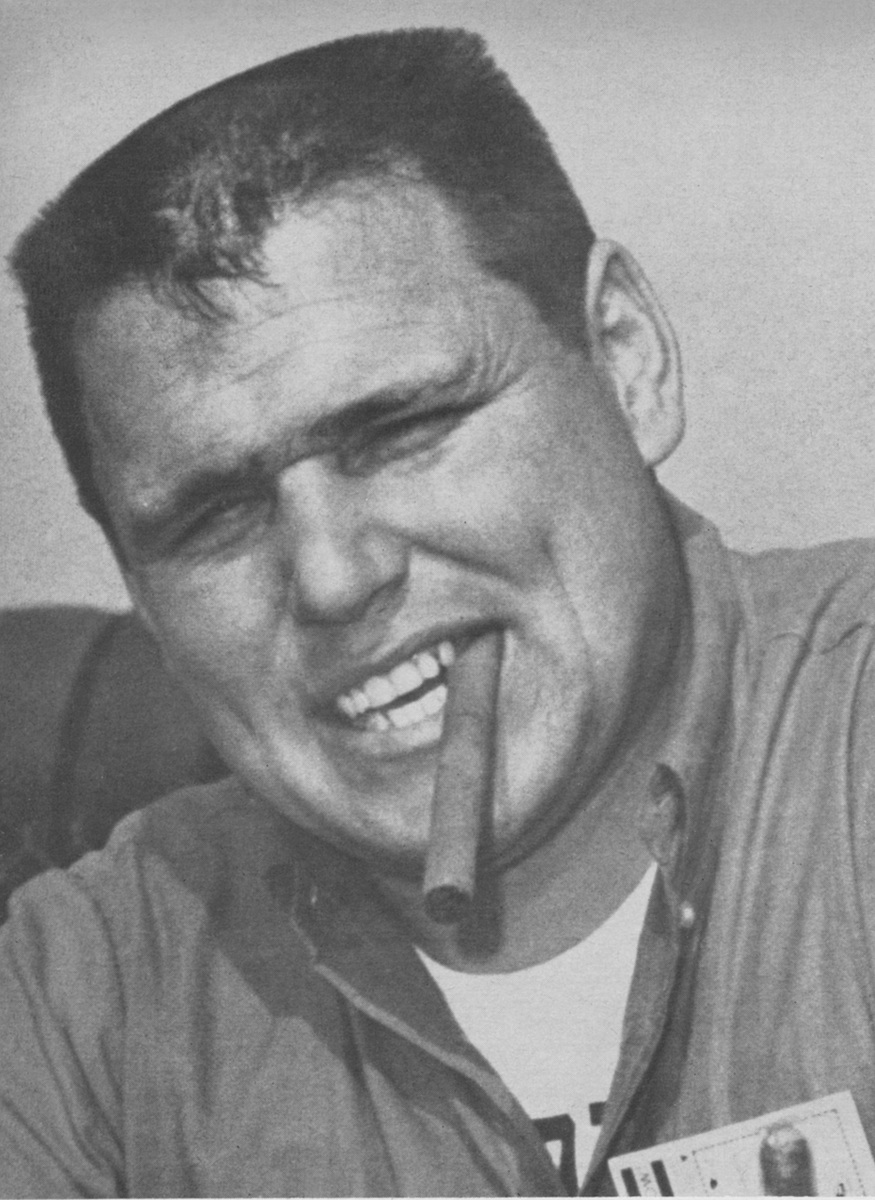
Dick Landy was known as “Dandy Dick”, a handle that was given to him by Hot Rod magazine writer Eric Dahlquist in 1964. “During those days, drag racers were envisioned by most people as guys with greasy Levi’s, caked with dirt and looking like they just finished working at the gas station,” Landy shared with Popular Cars magazine in 1987. “We had our white shirts and white tennis shoes. They weren’t exactly uniforms, but we were always clean and sharp.” That’s when the name “Dandy Dick” came from Dahlquist, who coined the phrase, and it caught on and stuck through the years. His penchant for having a clean and well-presented racecar presented a spotless image for his team and Dodge.

The extremely rare ’64 Dodge 330 2-door sedan came equipped from the factory with the A864 426 Race HEMI engine, and with Landy’s tune, on July 11, 1964, set the track record at Lions Drag Strip with an 11.14-second blast. In November 1964, it became the first “stocker” to hit 130 mph in the 1/4-mile, set at San Fernando. The car today is in the Museum of American Speed, Lincoln, NE.
Dick Landy shared his story with Hot Rod magazine writer John Dianna in an interview that was published in 1969: “In ’64, the Dodge people expressed a desire for me to run one of their cars, and that’s when I got my aluminum-front-end ’64 Dodge hardtop. That was a good car, and I did quite well with it; but in February, the HEMI was released. I ordered a business coupe with the HEMI engine and buckled down to learn the engine. The development work was endless, and I traveled many towing miles that year. I guess things changed for me then, and I was making my living racing. The shop became just a sideline. I concentrated on match races, so I changed the car accordingly. I upped the compression in the engine, removed the front suspension and installed a solid front axle from a Dodge van, moved the wheels a bit and I had myself a match racer.” That car was the factory lightweight model with aluminum front end, only 55 were originally produced.
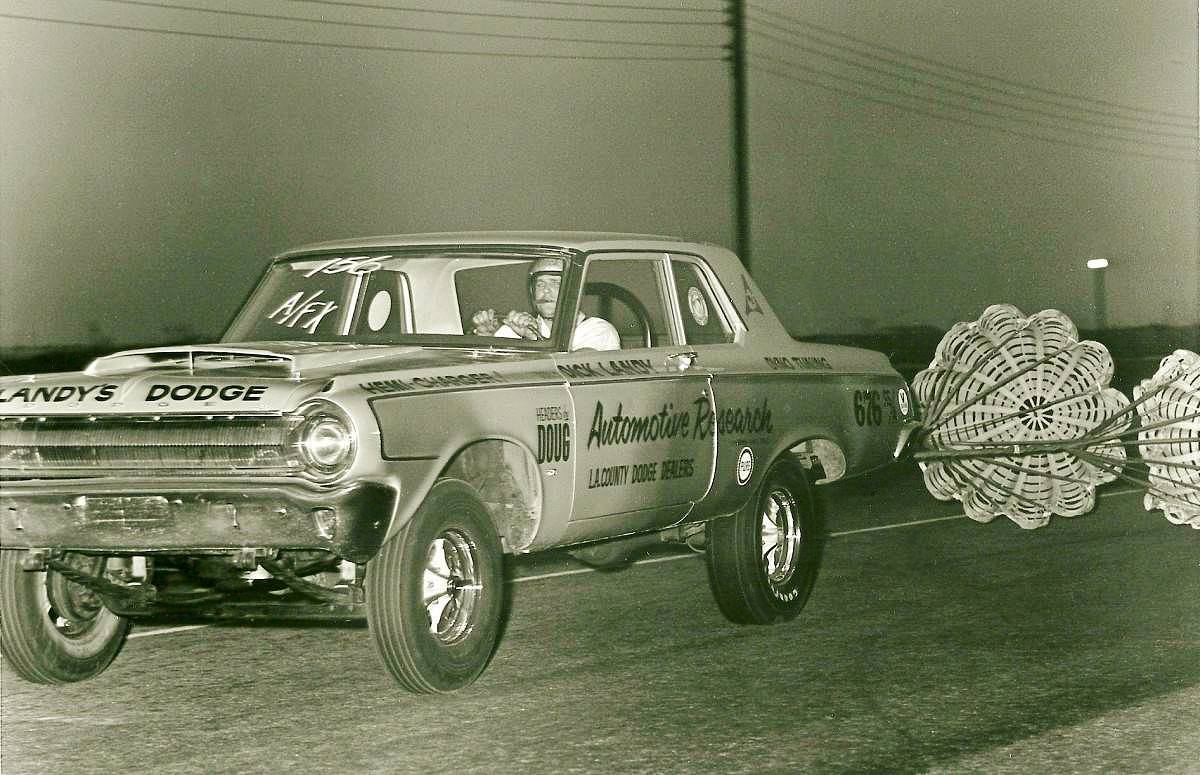
Landy’s 1964 car was converted to an A/FX (A Factory Experimental) with the use of a Dodge A100 van front axle, moving the front wheels forward by 6 inches, and the leaf spring front hangers were relocated to allow for moving the rear axle 8 inches forward. The silver paint touchup didn’t quite exactly match the factory color, however it was all about getting it on the track and making money with the match race scene.
1965: ALL ABOUT WEIGHT TRANSFER

The 1965 AWB Landy car was one of the factory-built A/FX drag cars (built by Amblewagon, a small conversion company located in Troy, Michigan) and the Coronet 2-door hardtop body was acid dipped for reduced weight, fiberglass fenders, hood, doors, instrument panel, deck lid replace the steel items. The most obvious feature being that the front wheels were moved forward by 10 inches, with the rear axle also re-located forward 15 inches. The end result was a 110-inch wheelbase, with the reason for the radical movement of the front and rear wheels being all about getting the weight of the car more suited for traction. In order to accommodate the extended front, there was a need for special length torsion bars (9 inches longer than standard) and the front K-member was constructed with stainless steel material, lightened up by 25 pounds as compared to a standard item.
Shown here at the Lion’s Drag Strip, Landy’s ’65 AWD (altered wheel base) Coronet Hardtop was running in the A/FX (factory experimental) class. At the Bakersfield Smoker Drag Meet, it had a 10.28-second run at 138 mph in winning the Top Stock Eliminator title. At the time, the car first saw drag strip action, it was a 4-speed car, at the Beeline Dragway in Tucson, AZ, Landy blew the transmission and at the next event, it was equipped from then on with the TorqueFlite.
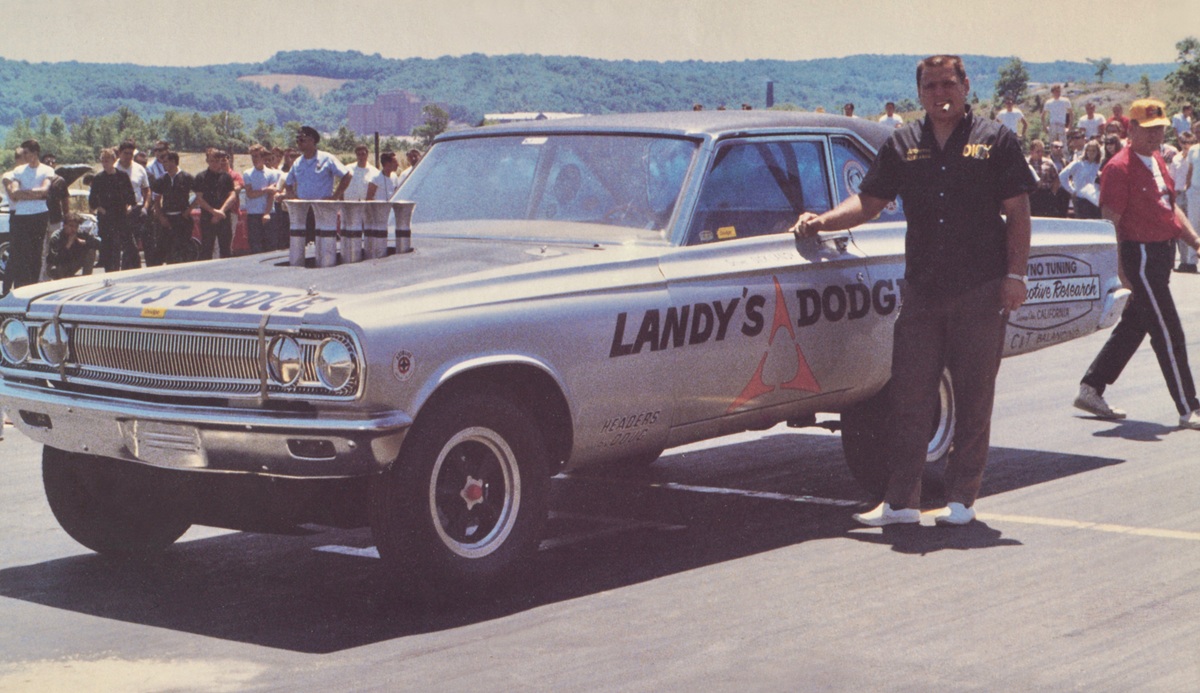
Dick Landy was hands-on involved in the “chemical milling” process of all the (Dodge and Plymouth) AWB bodies as they were being lightened. He was Automation Industries in Southern California, an aerospace and industrial metal finishing company, and shared with author Cliff Gromer in 1990 the details.
While researching the back story of the ’65 A/FX Coronet Landy car, which was 1 of 12 built, Gromer learned from Landy that under his supervision at the plant, the cars were run through the process and the very first body was done during daylight hours, with the rest done at night. Why? Here’s what Gromer wrote based on his conversation with Landy: “The first body was dipped during the daytime and it sent up a huge yellowish red cloud of ferrous oxide into the sky. It also sent the local residents into an uproar. So the rest of the bodies were dipped at night when the cloud wasn’t so obvious.”
Landy also shared that his car didn’t get shipped back to Michigan like the others right away, he had kept his and ran it through an extra step, neutralizing the acid in a baking soda process, and then had to be air-shipped to and from Michigan due to it being such a time-consuming process. (Landy’s ’65 AWD car had survived all the years as a result of this process!)


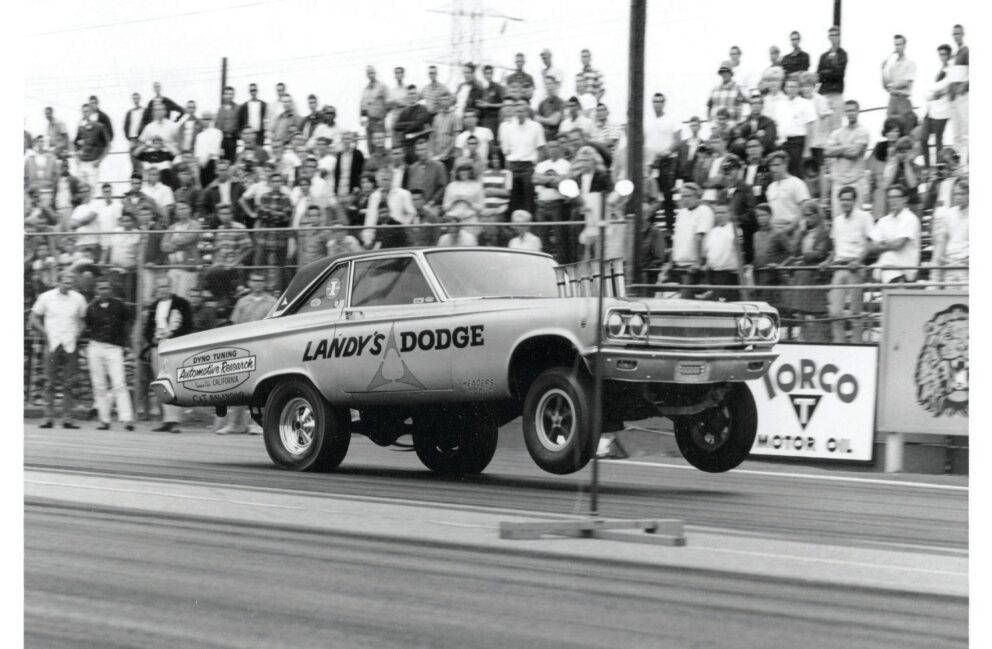
Part of the reason these altered wheelbase cars were created was to counter the rival A/FX Holman & Moody Ford Mustangs that featured an all-new SOHC 427 “Cammer” engine.
“Chrysler’s altered-wheelbase plan was a lot more effective than the new Ford engine because the biggest problem was traction,” Landy had pointed out in a 1995 interview. “We could make our cars hook up a lot better and the extra power of the Fords just compounded their traction problems.” Chrysler AWB cars such as Landy’s had 56-percent of the overall weight on the rear, with 44-percent up front. Ideal for traction at the time because the tire technology wasn’t all that great. The Landy AWB car ran a best of 9.60 in the 1/4 mile at 160 mph, and is said to have won 39 of the 40 match races he ran with it.
1966 LONG-NOSE DART
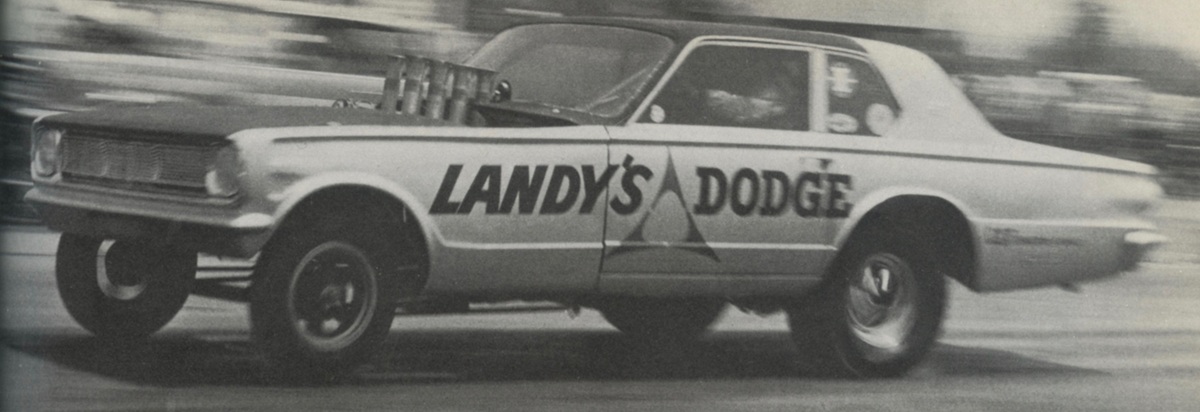
It was even crazier times for Landy in 1966, he had switched to the smaller A-body Dart sedan body and greatly extended the nose, moved the rear wheels forward and ran a Hilborn-injected HEMI engine, square tube frame rails and engine set back, a 1,700 pound car. That formula put him immediately into the 8-second zone! Later that season, off came the injectors, replaced by a supercharger and that was enough to crack the 180-mph top speed barrier. Best time: 8.22 @ 188 mph.
While it was a terror in the formative days of Funny Car racing, it became a bit much for Landy. It was late in ’66 and he was testing some supercharged engines for Chrysler where he had experienced a transmission explosion, and the fire and flames that happened caused a burn to his foot, all taking place at Central California’s Raisin City Raceway away from the press. This incident prompted Mopar racing boss Bob Cahill to point out that “we don’t sell these types of cars, maybe we should try something else.”
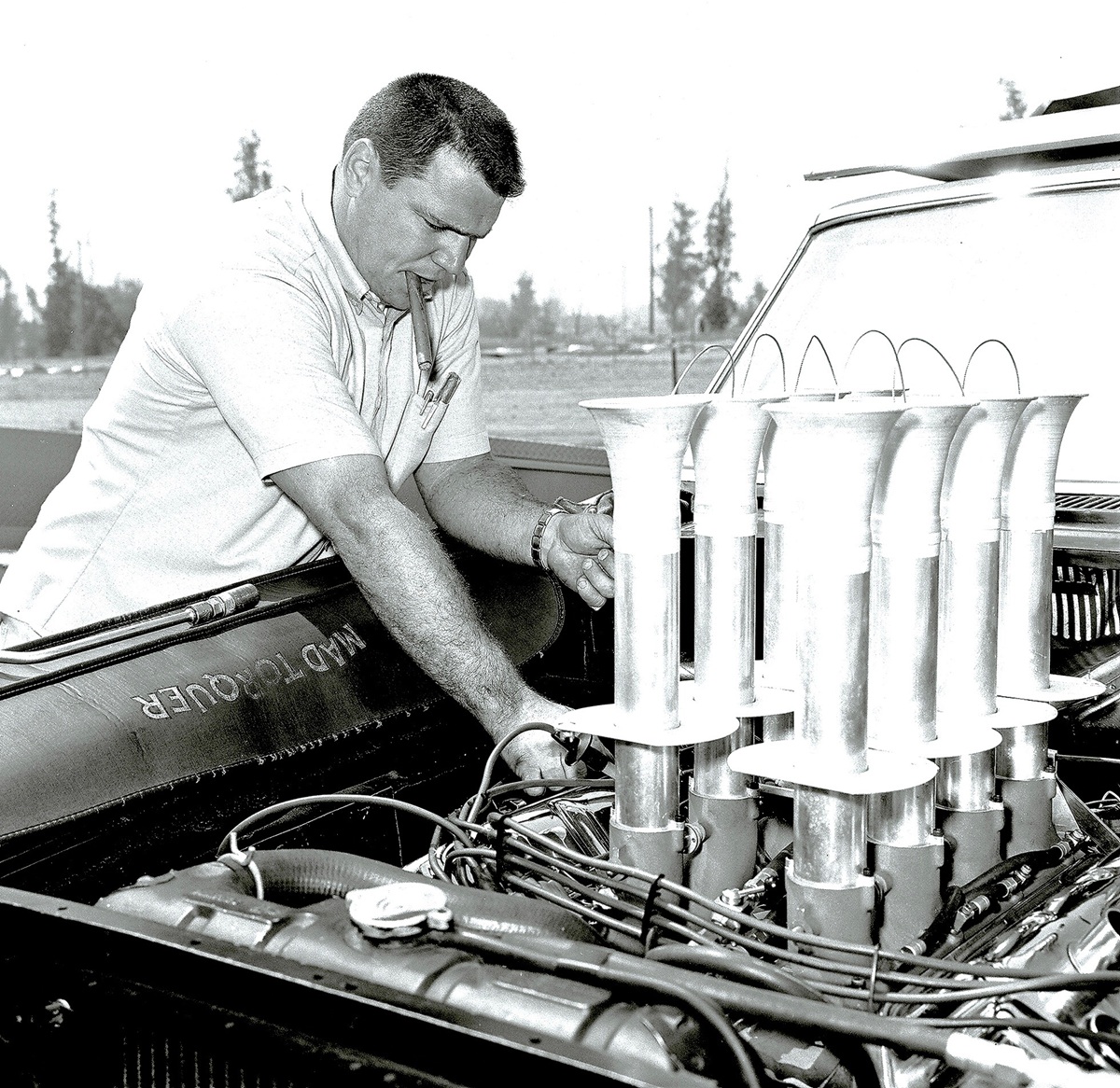
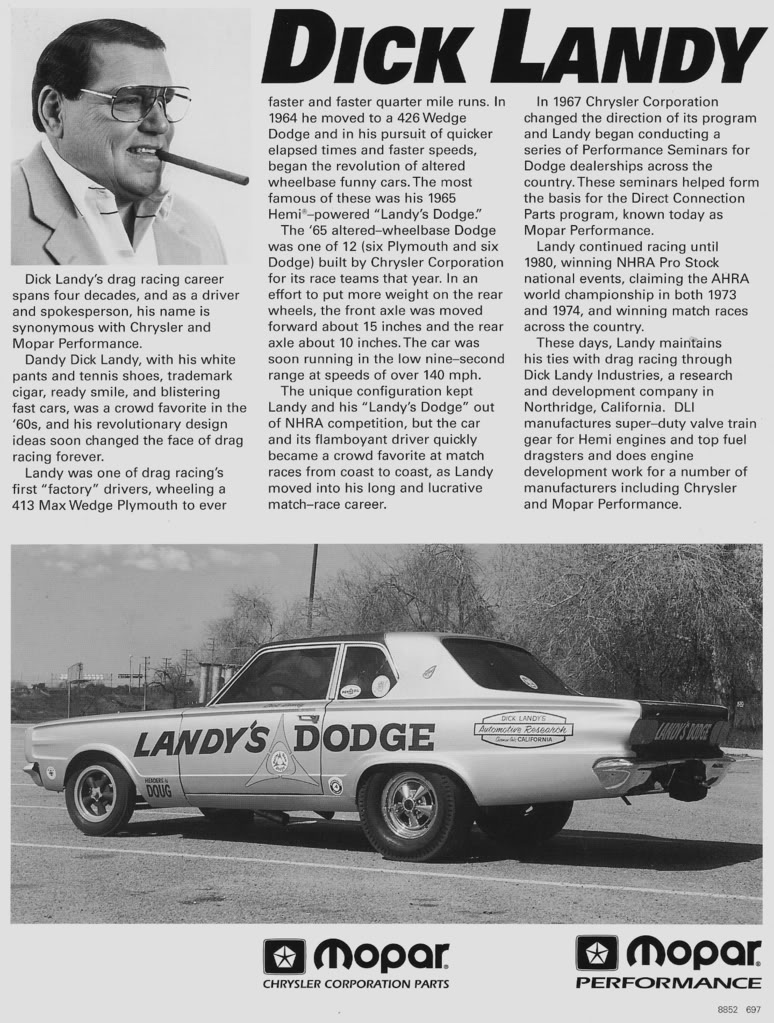
SWITCH TO SUPER STOCK ELIMINATOR CLASS
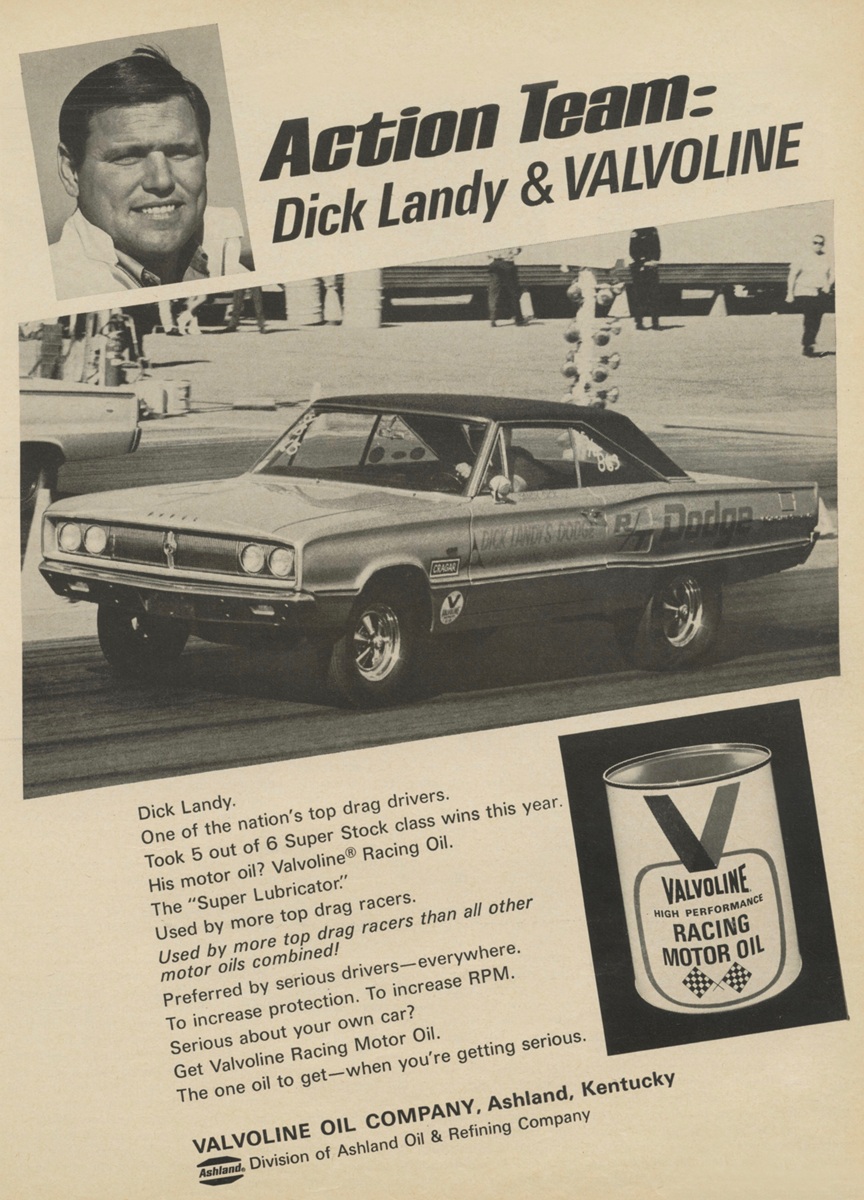
A major change took place at the end of the 1966 racing season for Dick Landy, as there was a decision made from the Dodge factory as to what he would be doing in 1967. “After running the blown motors in our cars, we realized that going those speeds with the tires we had was unsafe,” he shared in 1987 with Bob McClurg. “We had a big meeting back in Detroit, and it was decided that we should go back to Super Stock racing. That’s where the Performance Clinic idea was hatched.”
Landy (and Plymouth’s Sox & Martin team) was told by the management of the division’s racing programs that they could take their cars out to the dealers, and explain to the people exactly what they could do to their cars. “It was quite a change switching from nitromethane and fire-protective clothing to the suits and ties that we wore at the clinics,” he told National Dragster in 1995. “But it was still a great way to make a living. We would travel all over the country to the various Dodge dealerships, speaking to as many as 75,000 racing enthusiasts a year.” Those dealer clinics lasted for four years.
HEMI ENGINE-POWER SUPER STOCK “B”

1967 U.S. Nationals, Indy, the ’67 HEMI SS/B Coronet Hardtop at launch. It was fitted with the WO23 hood scoop. Note the deep oil pan. The reason for the white top? Dodge was running a “White Hat Special” campaign that model year, cars with white vinyl tops, and it was all about getting people into the showrooms!
440 WEDGE ’67 CORONET R/T SUPER STOCK “E” AUTOMATIC
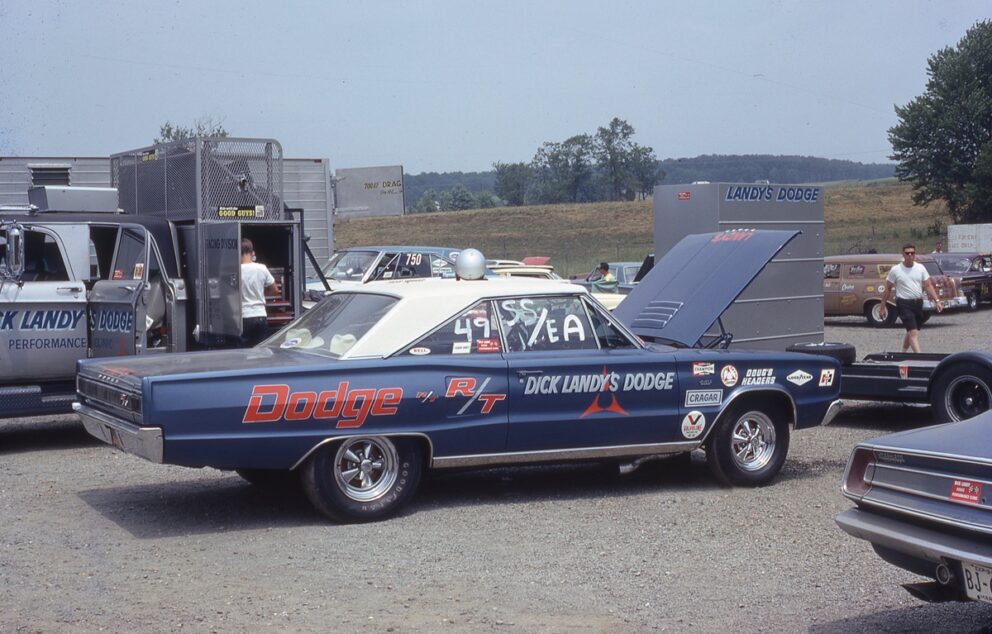
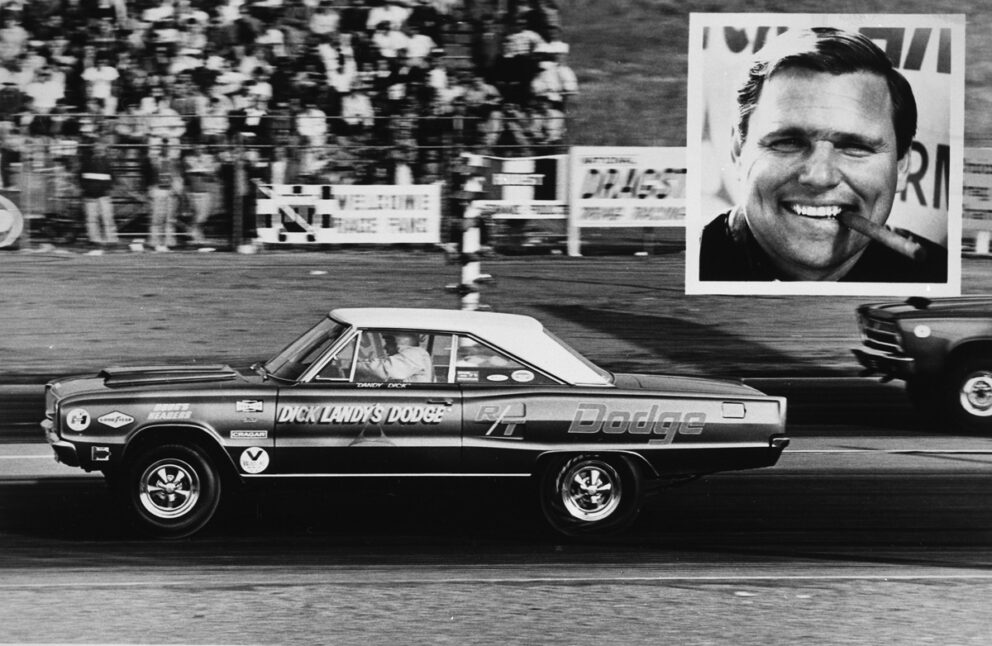
There were two 1967 Landy Coronets, this was the 440-cid version that ran in SSE Automatic. Note the two white cowboy hats on the interior’s rear tray!
NHRA S/S CARS FOR ’68

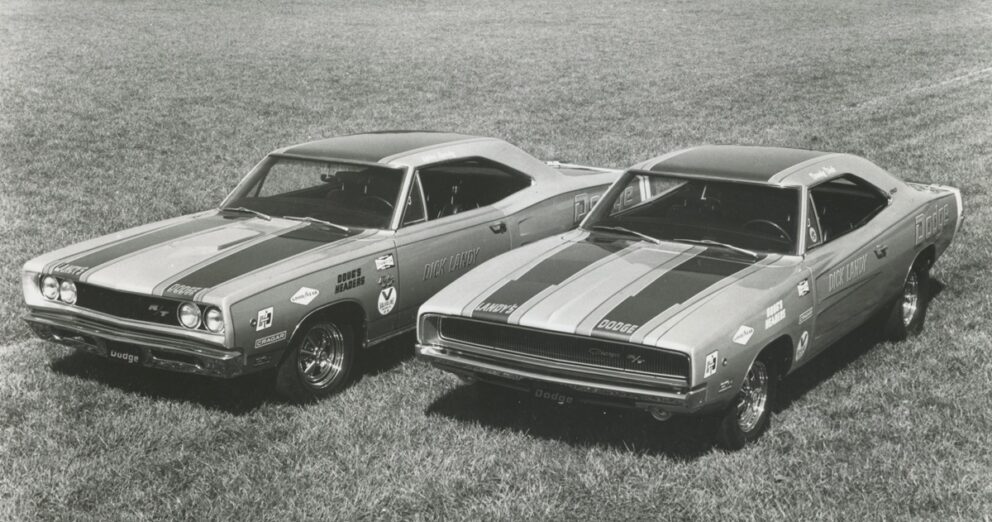
Dick’s younger brother Mike was recruited to drive the ’68 Coronet R/T team car (a 440 car which ran in the SS/FA class), and as seen in these factory B&W photos, the “Doug’s Headers” stickers were on the cars, shortly after Hooker Headers came on board as sponsors. It was an unusual time for Landy at this time, as these OCIR and grassy park staged photos shows the ’68 Charger with “R/T” grille emblem, and it featured stock Charger hood. It is believed the car was converted to a more radical version shortly after these publicity photos were taken.
HIGHLY PUBLICIZED LANDY CHARGERS FOR ’68
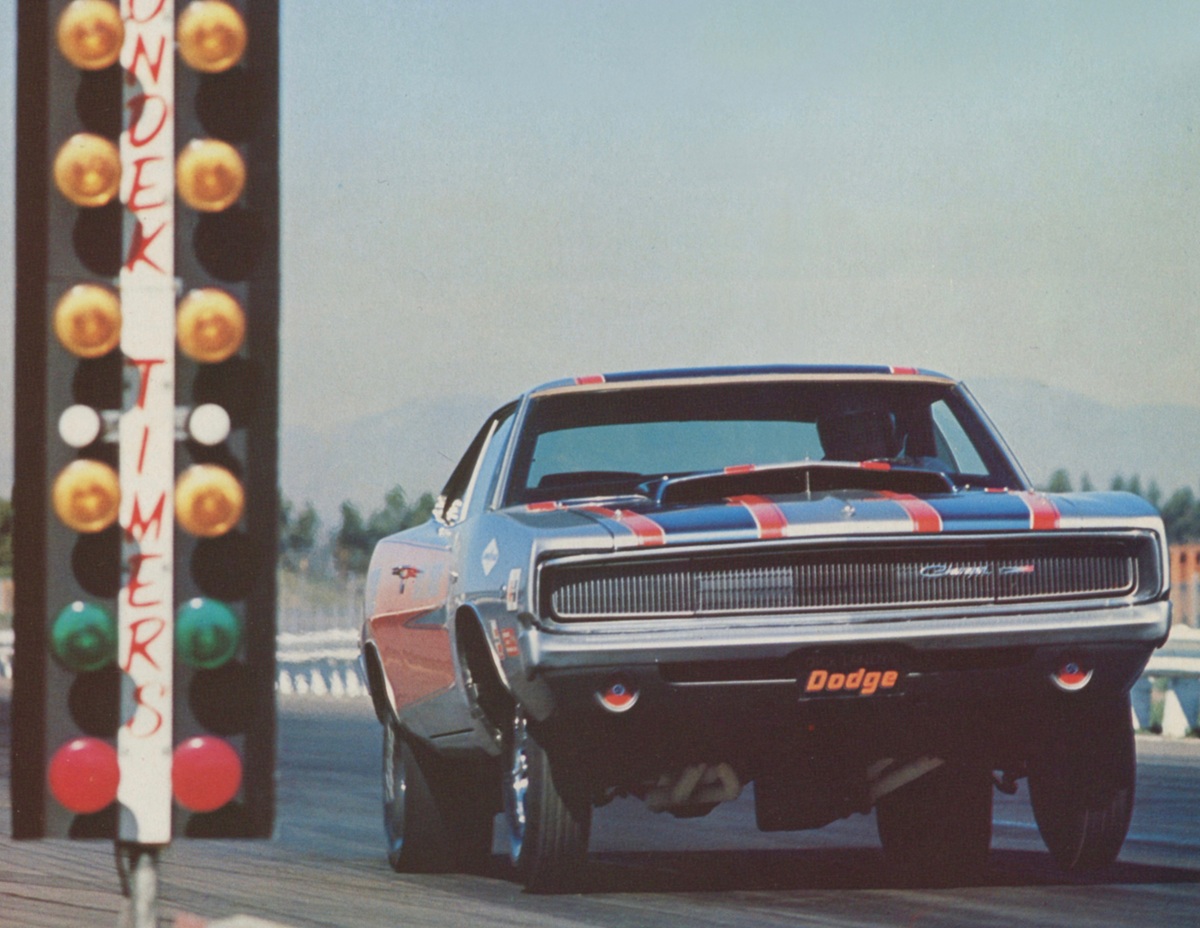
The 1968 Charger was set up specifically for the AHRA (American Hot Rod Association) Super Stock division, where the rules were more liberal than the NHRA S/S classes. It also ran in NHRA A/Modified Production class. This meant the car was able to incorporate a much more potent HEMI engine than what the factory fitted in ’68 (street HEMI). This Charger featured a 12.5:1 race HEMI engine, magnesium cross-ram intake, aluminum cylinder heads and two 1 11/16″ x 1 11/16″ Holley carburetors. Engineering Code A990. Add in fiberglass front fenders, fiberglass front bumper, fiberglass scooped hood, fiberglass deck lid. 3400 pounds, slickshift 4-speed and 10.40s at 132 mph. Yeah!
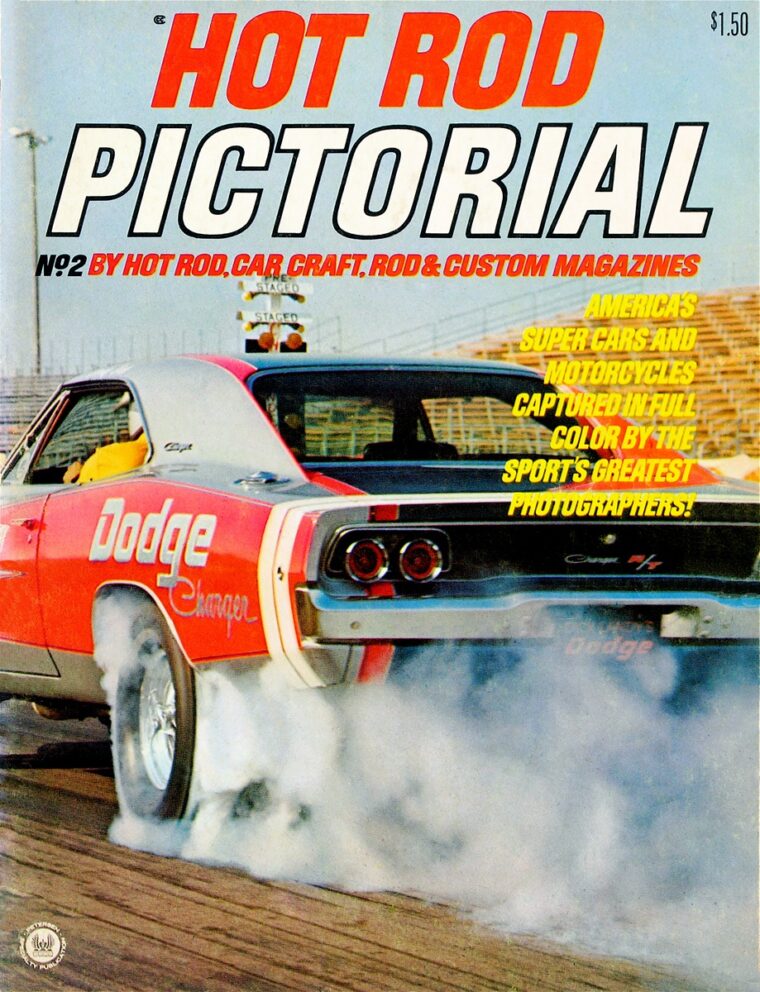
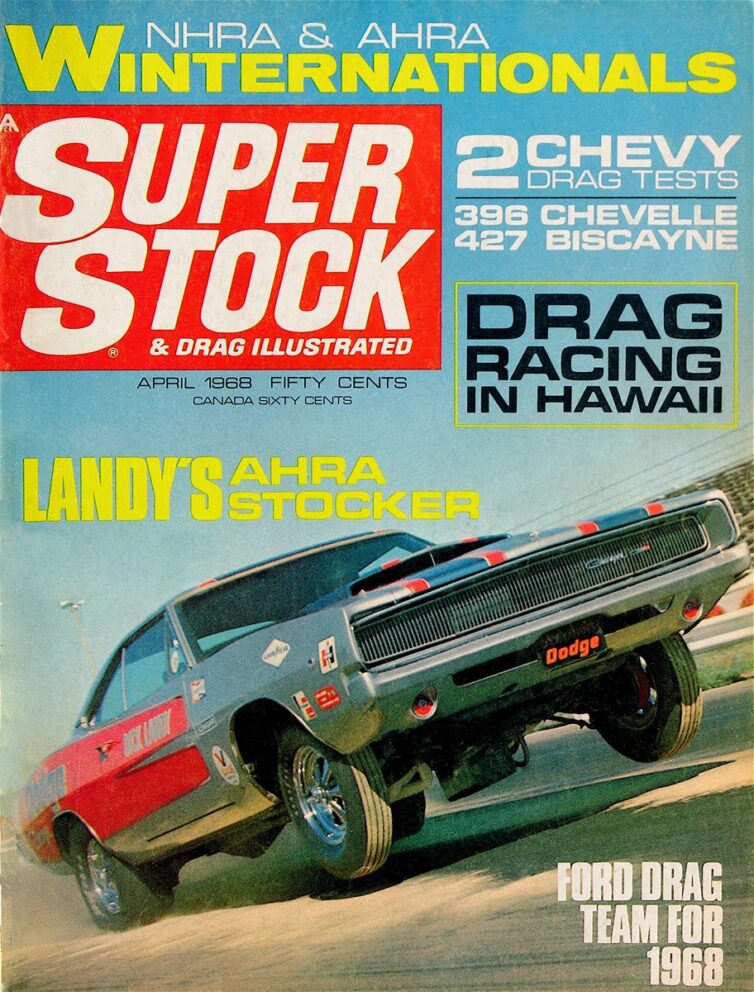
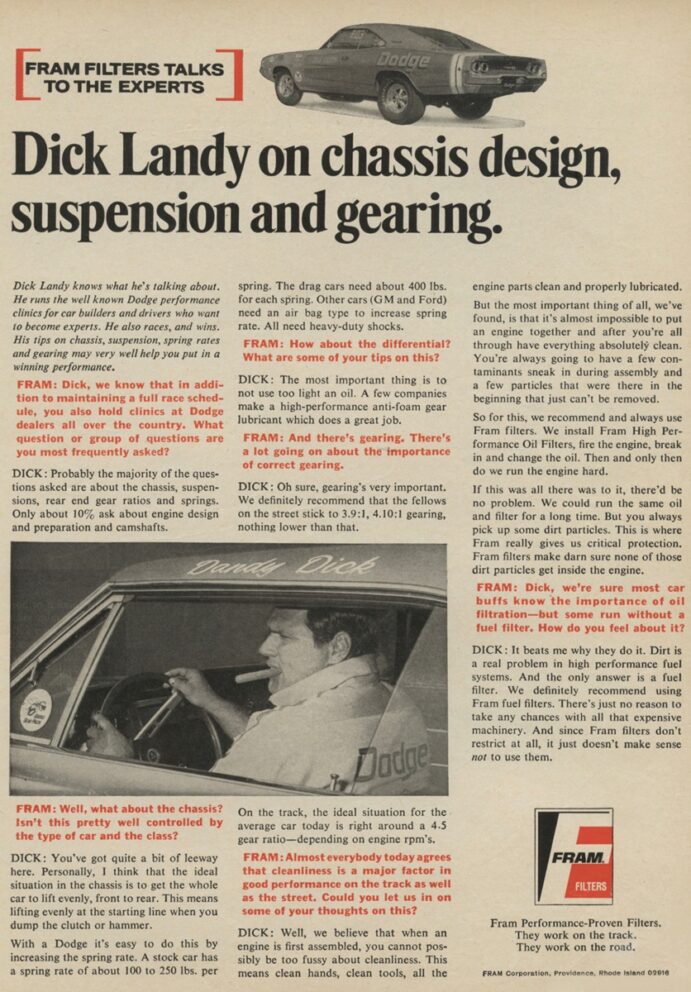
They called it “ink” back in the day (because newspaper and magazine print coming from liquid ink) and the magazines gave a lot of exposure to Dick Landy, including multiple cover shots. And his sponsors further promoted the cars with ads such as Fram Filters and Cragar Wheels.
DODGE DEALERSHIP PERFORMANCE CLINICS
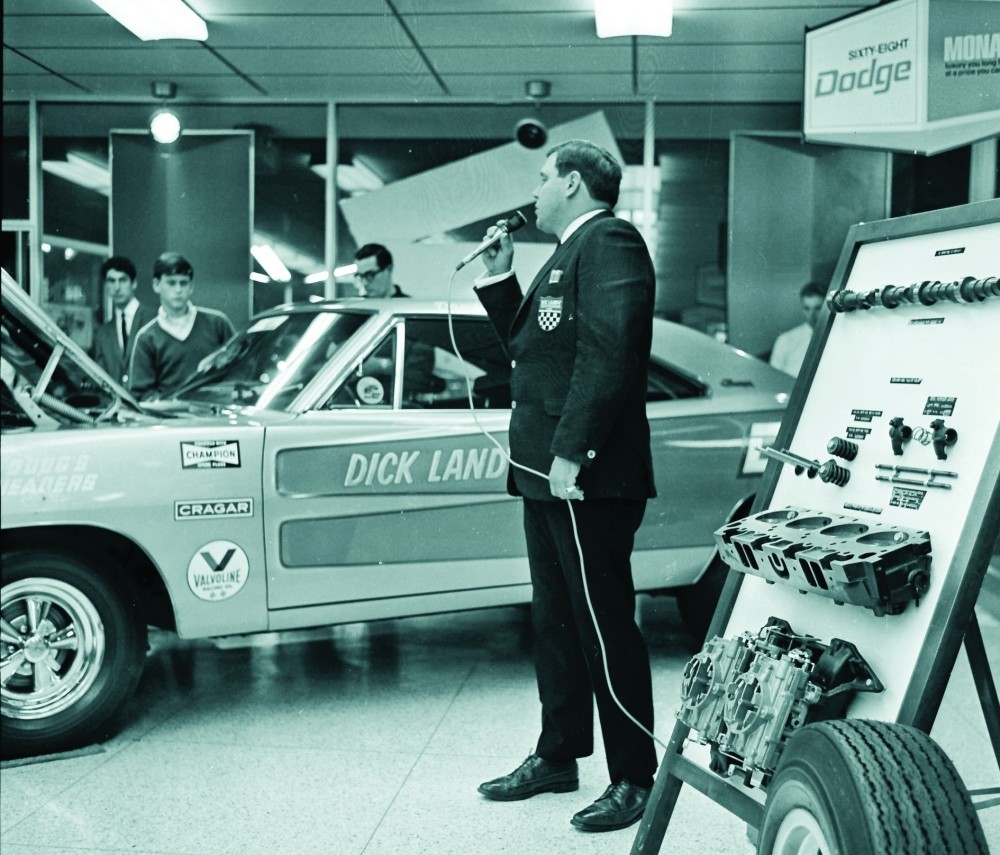
Landy was a great public speaker and was able to talk with young people all about Dodge performance cars and what it takes to make them perform to their fullest.

With new for ’68 Dodge vehicles out front and Landy’s ’68 Charger inside the showroom, it was a memorable evening for all who attended! Saddleback Dodge (Costa Mesa, CA) was a performance dealer and besides hosting the Performance Clinic, they also sponsored local Dodge Funny Car racer Charlie Allen at the time.
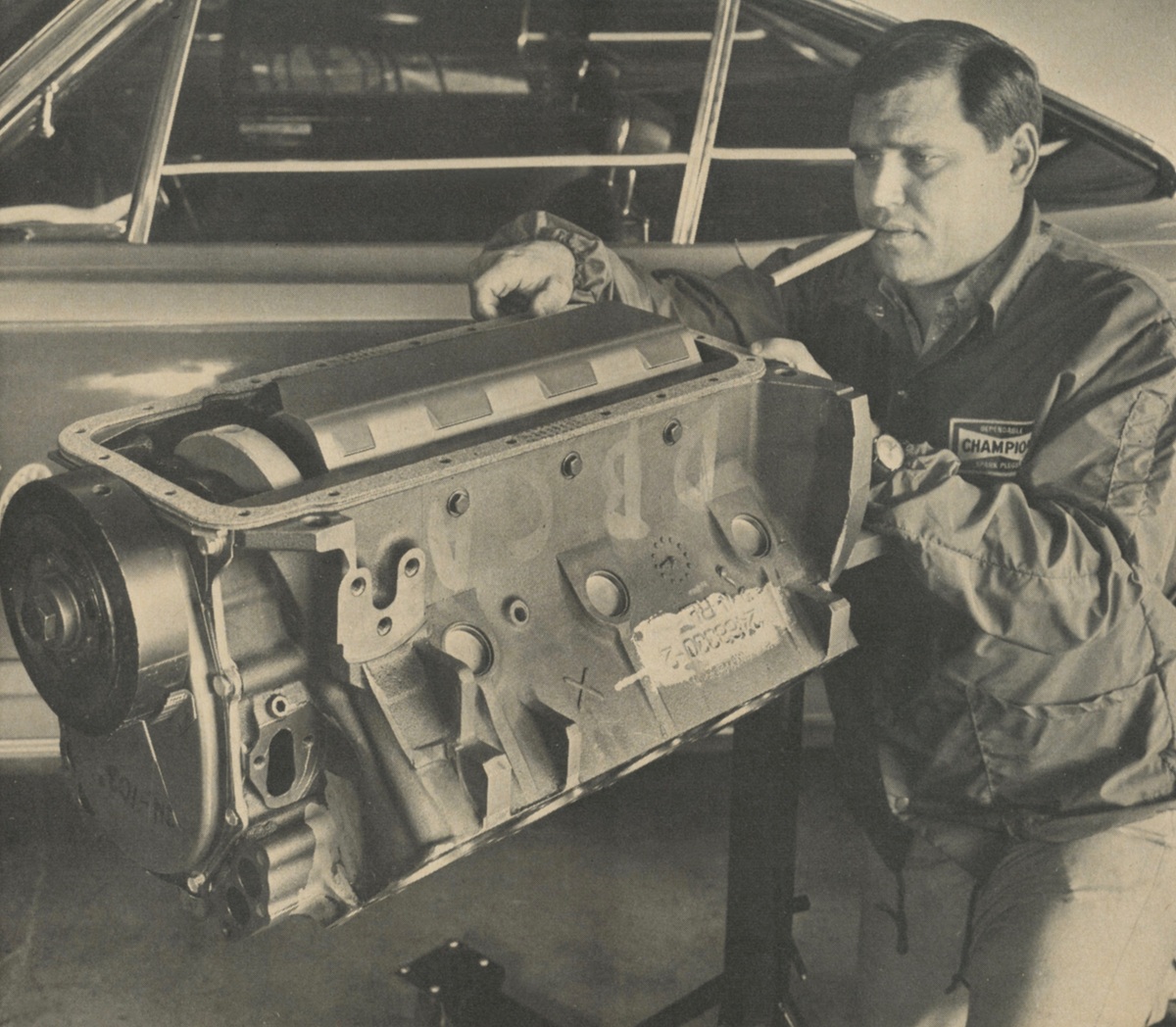
Among the topics that were discussed at these performance clinics were items that were available in any Dodge or Chrysler/Plymouth Parts Department, including the B/RB/HEMI crankshaft wintage tray. This inexpensive item was said to be worth some 15 horsepower.
FIRST TO RECEIVE 1968 SUPER STOCK HEMI DART
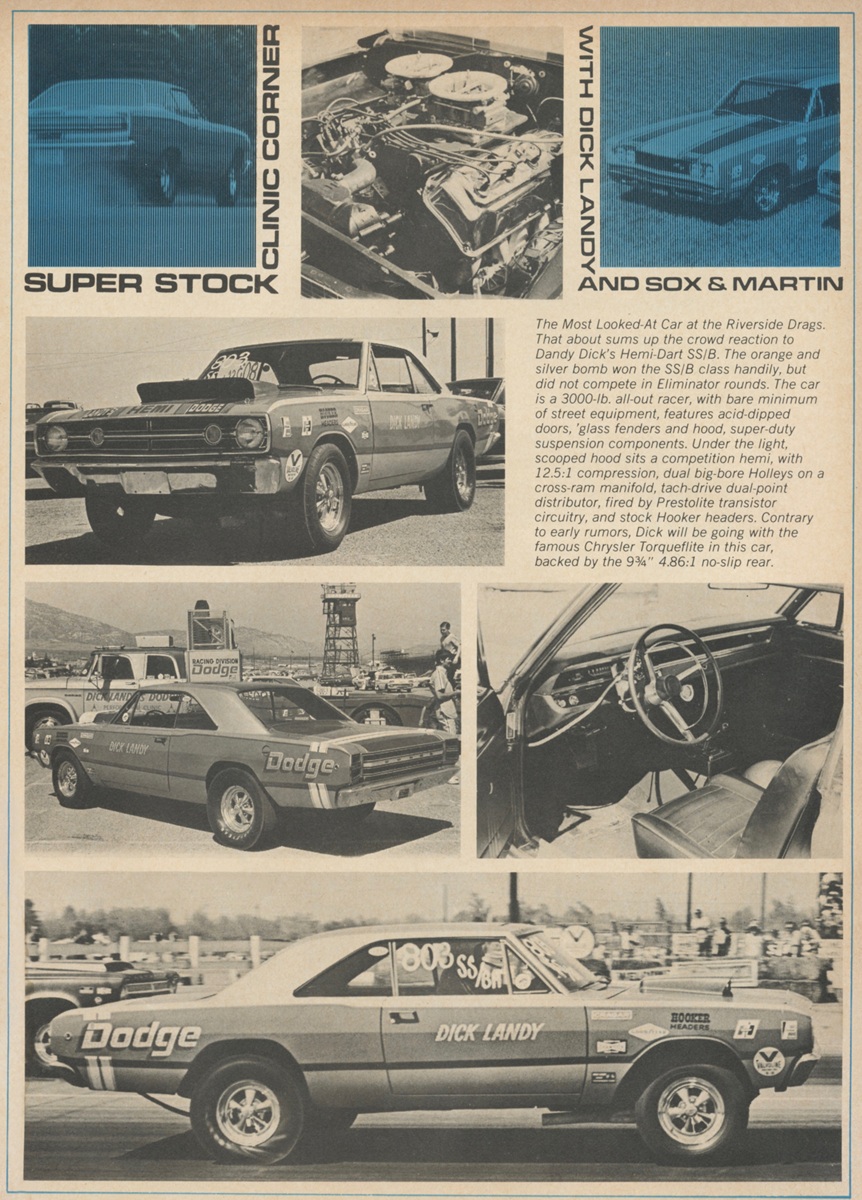
With him being the “star” Dodge-sponsored drag racer, Dick Landy was the very first to receive one of the 1968 HEMI Dart Super Stockers, and when it appeared at the Riverside International Raceway drag races, it got noticed! Super Stock & Drag Illustrated was the first to give it national publicity.
1968 440 DART SS/EA
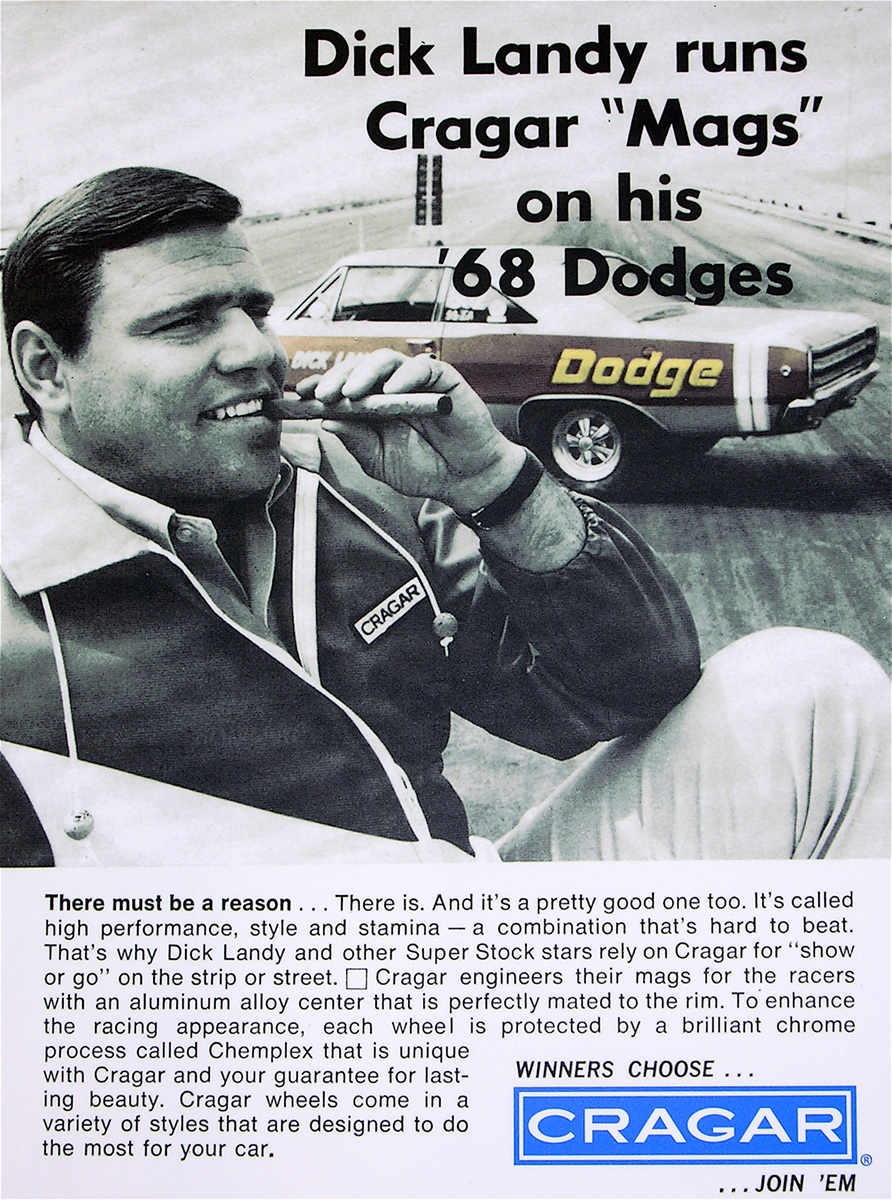
With the big racing budget that Dodge Division had, the factory provided Landy with numerous cars for drag strip activities. Added to the fleet for ’68 was a 440-Magnum Dart, and it was an automatic car. According to Landy, “It was the most trouble-free car at the time, and no matter how hard or often you ran it, the car just never seemed to break.” The best time recorded for the car while Landy ran it was an 11.70 et at 121.70 mph. The car was featured in one of the full-page Cragar Wheels magazine advertisements back in 1968. Two things that are instantly recognized: “Dodge” and “Cragar” and you can’t overlook the big cigar!
1969 = THE SWITCH TO MODIFIED PRODUCTION CLASS
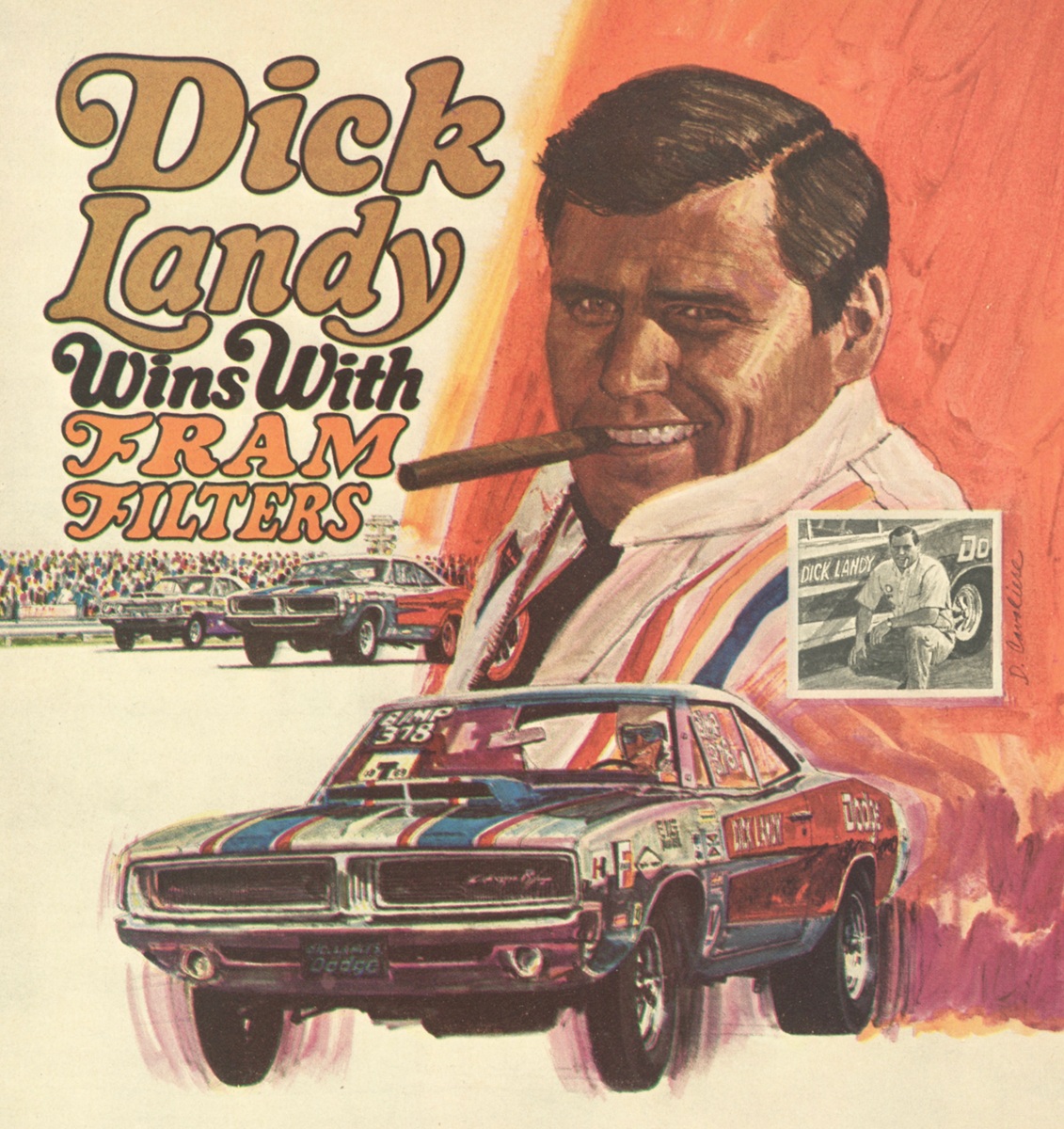
The 1969 Charger B/Modified Production car art was actually a rendering of the 21 x 28-inch poster that Fram Filters was selling for the sum of $1.00 (along with a box top from a Fram Filter box).

Forgedtrue Pistons, based in the LA area, had some fun with advertising their pistons and featuring Dick Landy and one of his Dodge Super Stocks. With the Bank of Downey entrance and a “wheelbarrow of money”, the point was made, Landy used their pistons!
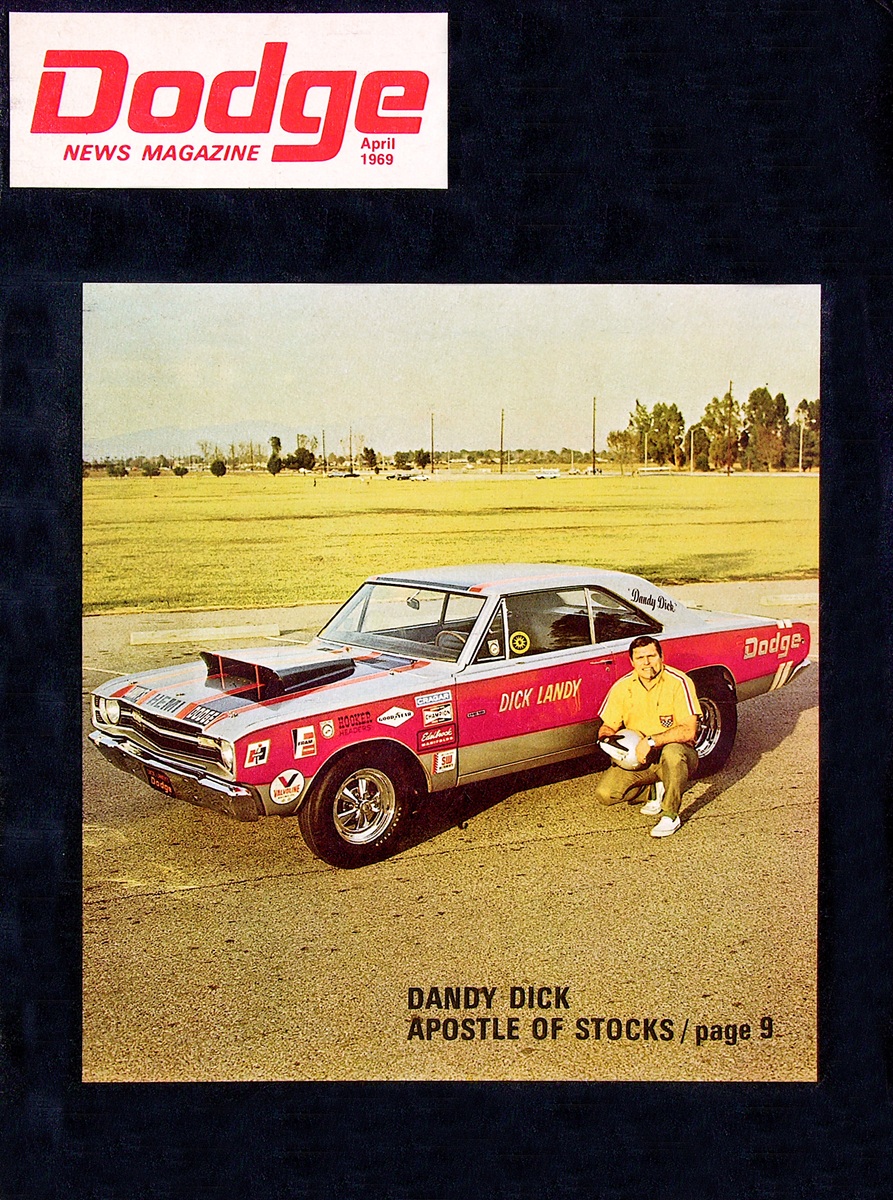
With a 1969 grille upgrade, the LO23 Dart was on the cover of the April 1969 Dodge News Magazine, the publication that was sent to motorists that had purchased new Dodge vehicles.
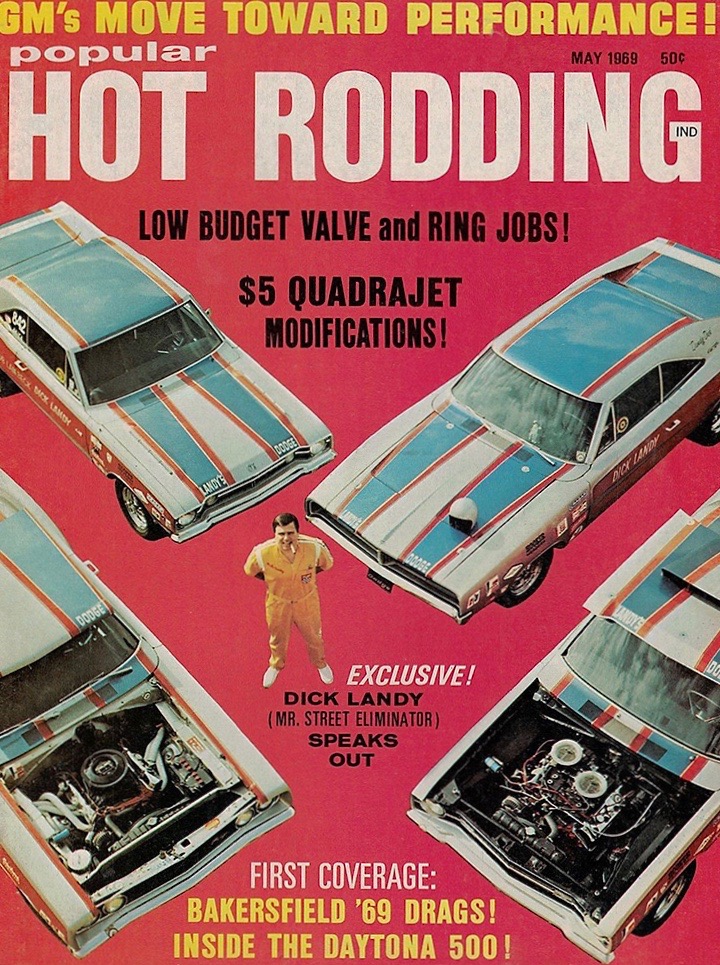
Dick Landy had a number of drivers helping him during this time frame, Bob Lambeck his main team driver, and others got behind the wheel of the various Landy cars as well, including Herb McCandless and Mary Ann Foss. Dodge wanted as much exposure as possible and Dick could only drive one at a time! At one time, he had seven cars in his fleet during a single season.
On the whole cigar thing: When writer John Dianna had inquired about that topic, asking if he ever lit one, in a late 1969 interview, Landy replied with this: “I’ve lit ’em for a joke, but don’t smoke ’em. I just chew on ’em and throw ’em away. In fact, I chew about a box a week when I’m racing.”
Richard Joseph Landy 1937 – 2007
NEXT: ON TO A NEW NHRA CLASS – “PRO STOCK” AND THE NEW DODGE CHALLENGER
Author: James Maxwell

0 Comments